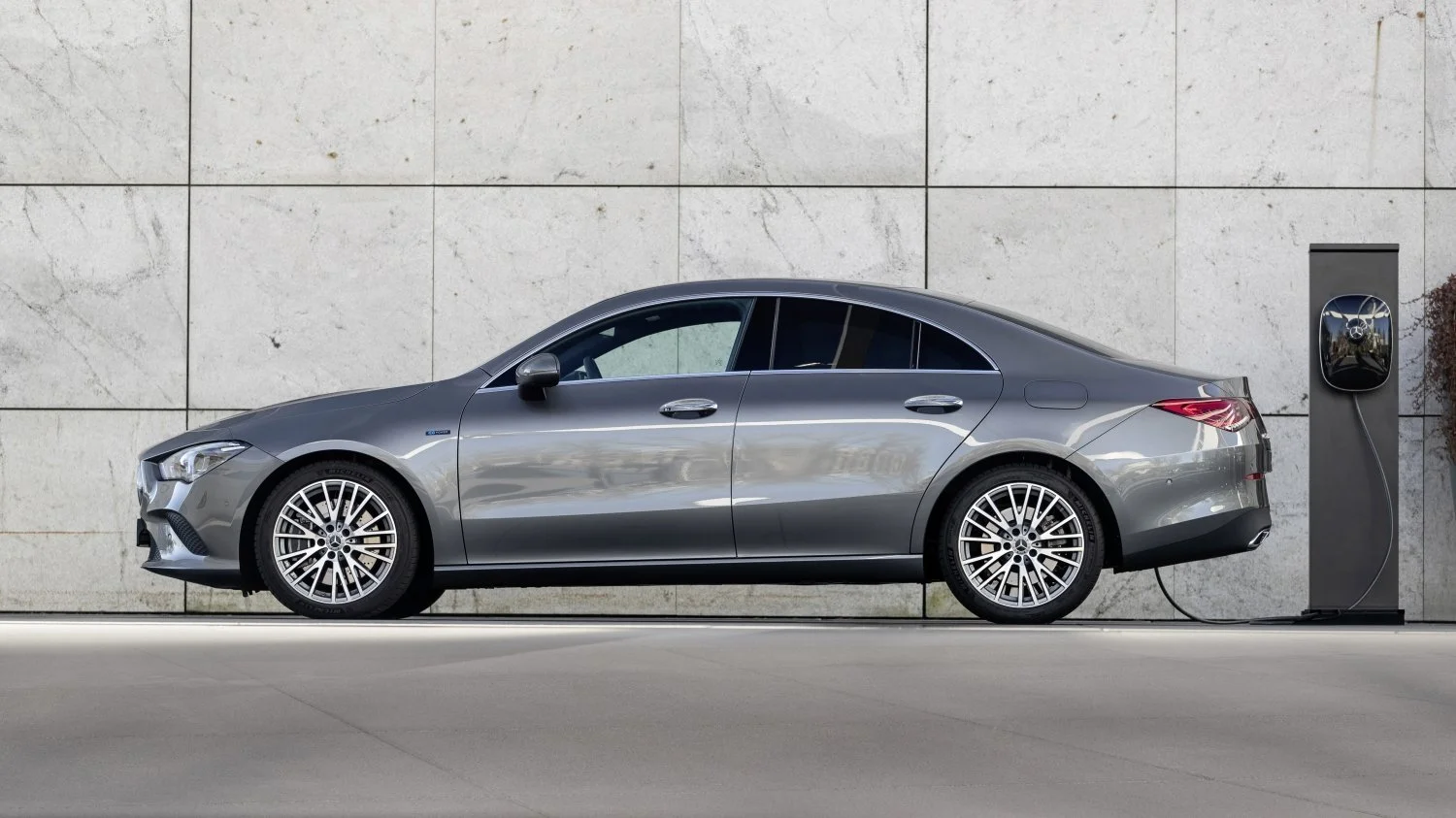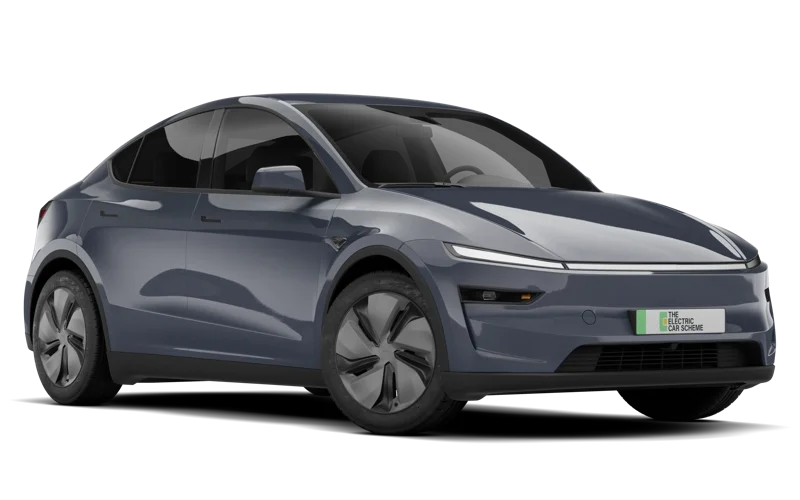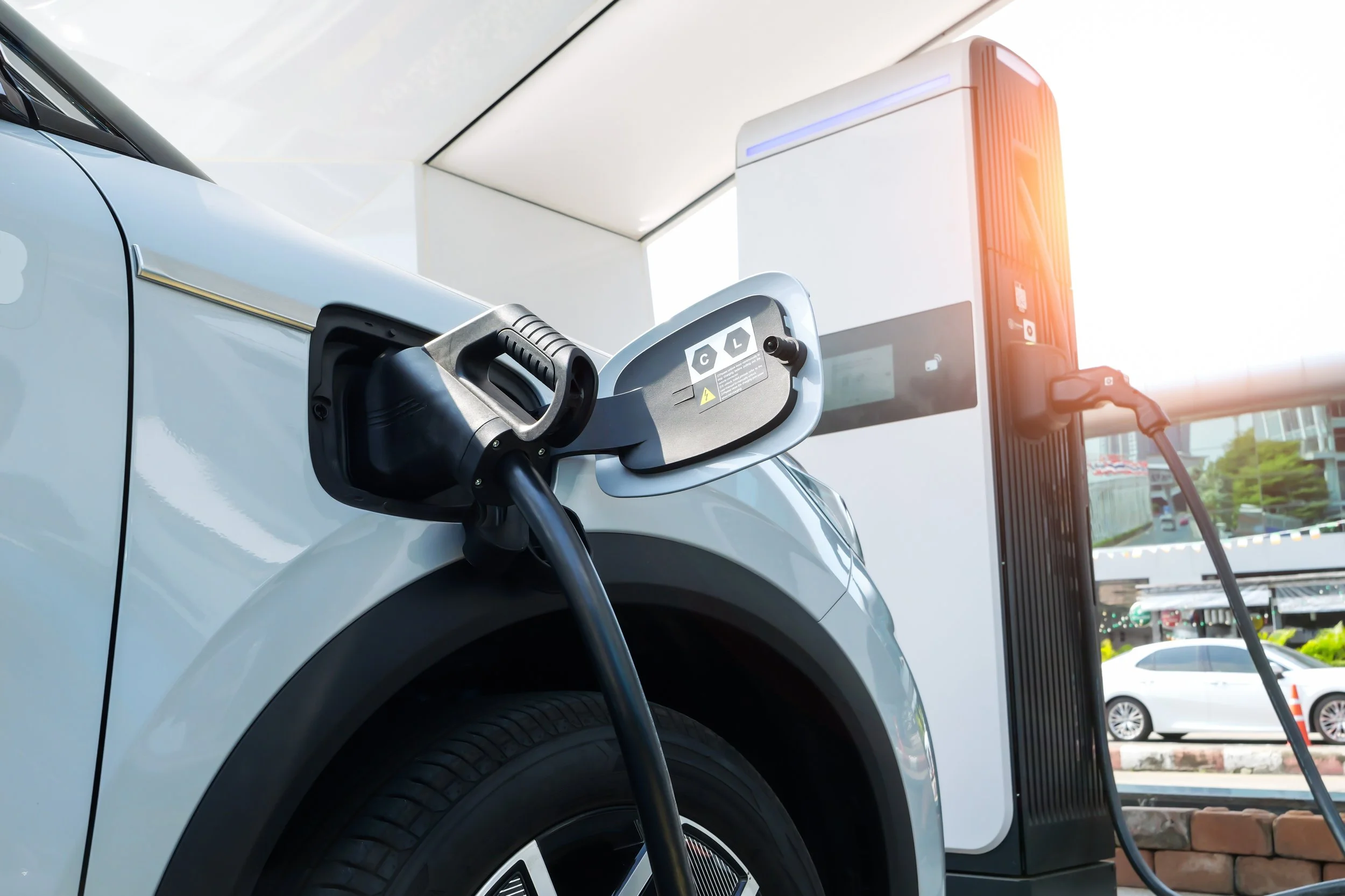Company Car Scheme 2026: Your Guide to Electric vs Hybrid BiK Tax
Source: Mercedes Benz Media
If you're responsible for employee benefits or fleet management, you've probably noticed that company car schemes have changed a lot over the past few years. The tax landscape has shifted to favour cleaner vehicles, and it has created great opportunities for businesses looking to improve their benefits package.
But here's the thing: navigating BiK tax rates, understanding HMRC rules, and working out what actually makes sense for your business can feel overwhelming. Should you offer only electric cars? What about employees who aren't quite ready for a full EV? And what do all these tax changes actually mean for your bottom line?
This guide answers all of those questions. We'll walk you through the 2026 company car tax, explain how the rules work in practice, and help you think through what approach might work best for your business and your team.
Understanding the 2026 BiK Tax Landscape
Let's start with the basics: Benefit in Kind (BiK) tax is what employees pay when they receive a company car for personal use. The amount they pay depends on three things: the car's list price (P11D value), its CO2 emissions, and the employee's income tax bracket.
The government sets BiK rates to encourage cleaner vehicles, which is why electric cars enjoy lower rates than petrol, diesel, or even hybrid alternatives.
What Are the Current BiK Rates?
For the 2025/26 tax year, here's where things currently stand:
Electric vehicles: 3% BiK rate
Rising to 4% in 2026/27
Then 5% in 2027/28
Increasing by 2% annually from 2028, capping at 9% in 2029/30
Plug-in hybrids (1-50g CO2/km): 6-19% depending on electric range
Vehicles with over 130 miles of zero-emission range: 8%
70-129 miles: 10%
40-69 miles: 13%
30-39 miles: 15%
Under 30 miles: 17%
Rising to a flat 18% in 2028/29, then 19% in 2029/30
Petrol and diesel cars: 23-37% based on emissions
Rising to 38% in 2028/29, then 39% in 2029/30
Diesel vehicles without RDE2 standards face an additional 4% surcharge
Are there tax or company car benefits for choosing a plug-in hybrid?
Yes. Plug-in hybrid vehicles in the UK benefit from significantly lower Benefit-in-Kind (BiK) tax rates compared to petrol and diesel cars. For 2025/26, PHEVs with 1-50g CO2/km emissions attract BiK rates of 6-19% depending on their electric range, whilst petrol and diesel vehicles face rates of 23-37%.
PHEVs also benefit from lower Vehicle Excise Duty (VED). Most plug-in hybrids fall into the £10-£195 annual VED bands, compared to higher rates for traditional combustion vehicles based on their CO2 emissions. When offered through a company car scheme or salary sacrifice scheme, these lower tax rates translate to substantial monthly savings - typically £150-£300 less per month in BiK tax compared to an equivalent petrol or diesel company car.
Why Does This Matter for Your Business?
These numbers translate into real money for your employees and real decisions for your business. Let's look at a practical example. Imagine two similar vehicles, both worth around £45,000:
Tesla Model Y (Electric) at 3% BiK:
A 40% taxpayer pays £47 per month in BiK tax
BMW 3 Series M Sport (Petrol, 270g CO2/km) at 37% BiK:
The same employee pays £458 per month in BiK tax
That's a difference of over £400 monthly, or nearly £5,000 annually!
What's Happening Through 2028?
The government has given us clarity on rates through 2028 (and indications beyond that), which is helpful for planning. The key trend is that the gap between EV rates and everything else is narrowing, but it remains substantial.
This creates a planning window. Employees starting EV leases now lock in lower rates for their entire lease term (typically 3-4 years). As rates rise, the relative advantage of decisions made today becomes clearer.
How HMRC OpRA Rules Affect Your Company Car Scheme
You might have heard of OpRA rules and wondered what they actually mean for your scheme. OpRA stands for Optional Remuneration Arrangement, and it's HMRC's term for situations where employees give up salary in exchange for a benefit, like a car through salary sacrifice.
The OpRA Advantage for Ultra-Low Emission Vehicles
Here's where it gets interesting: HMRC treats ultra-low emission vehicles (ULEVs) more favourably under OpRA rules. For most benefits provided through salary sacrifice, OpRA rules mean the taxable value is the higher of either:
The BiK value, or
The amount of salary sacrificed
But for ULEVs - defined as vehicles with CO2 emissions of 75g/km or less - OpRA rules work differently. The BiK calculation remains based purely on the vehicle's P11D value and BiK rate, not the salary sacrifice amount. This means your employees benefit from both the reduced taxable income (through salary sacrifice) and the low BiK rates.
In practice, this is why salary sacrifice schemes for electric cars deliver attractive savings - typically 20-50% compared to personal leasing or car finance.
Does This Apply to Hybrids?
Most plug-in hybrids fall outside the ULEV definition because they emit more than 75g CO2/km. However, they still work within hybrid salary sacrifice schemes - the tax treatment is simply based on their actual BiK rate, which remains more favourable than petrol or diesel alternatives.
What About Compliance?
If this sounds complicated, here's the reassuring part: when you work with an established salary sacrifice provider, like The Electric Car Scheme, they handle the OpRA compliance for you. The calculations, HMRC reporting, and payroll adjustments are all managed as part of the service.
Your responsibilities are straightforward:
Ensure employee contracts include appropriate salary sacrifice clauses
Process the monthly payroll adjustments your provider supplies
Submit the P11D forms that your provider prepares
Keep clear records of the arrangements
Building Your Fleet Strategy: What Actually Works?
Now for the question you're probably really asking: what should your company actually offer?
There's no single right answer, and that's okay. Your approach should reflect your business culture, your employees' needs, and your broader company goals around sustainability and employee benefits.
Approach One: Pure EV Fleet
Source: BYD Media
Some businesses choose to only offer electric vehicles. This approach has clear benefits:
Advantages:
Maximum tax efficiency for employees
Strongest sustainability credentials
Simplified administration (fewer vehicle types to manage)
Clear, easy-to-communicate policy
Future-proofed against increasing hybrid BiK rates
Considerations:
May not suit all employees' circumstances
Requires adequate charging infrastructure messaging
Could limit participation if employees have concerns about EV practicality
This works particularly well for:
Businesses with strong sustainability commitments
Companies with employees who are based in cities or urban areas
Organisations where most employees have home charging access
Teams are comfortable with new technology
Approach Two: Mixed EV and Hybrid Options
Other businesses offer both electric and plug-in hybrid vehicles, giving employees a choice within the scheme.
Advantages:
Maximises employee participation and satisfaction
Accommodates diverse employee circumstances
Supports employees at different stages of readiness for EVs
Still delivers significant tax savings versus petrol/diesel
Considerations:
Slightly more complex administration
Need to communicate tax differences clearly
Requires a balanced presentation to avoid showing a preference
This works well for:
Businesses with teams across the country
Companies prioritising employee choice and satisfaction
Organisations with employees in varied housing situations
Businesses taking a pragmatic approach to sustainability
Approach Three: Strategic Transition Planning
Some businesses are implementing phased approaches, starting with employees who are EV-ready, then expanding access as infrastructure and awareness develop.
This might look like:
Year one: Pilot with 20-30 employees (EV-focused)
Year two: Open scheme to all employees (EV and hybrid options)
Year three: Full scheme with enhanced charging support
Year four: Evaluate moving to EV-only based on uptake and feedback
What Role Does Employee Choice Play?
Here's something worth thinking about: employee benefits work best when employees actually want them. The most tax-efficient option isn't valuable if it doesn't meet your team's practical needs.
Modern salary sacrifice providers support both EVs and plug-in hybrids because employees' circumstances vary. Someone with off-street parking and a home charger has different needs than someone in a flat without charging access. Both employees deserve to benefit from lower company car tax rates.
Image source: Shutterstock
Your role as an employer isn't to mandate vehicle type; it's to provide access to tax-efficient options and let employees make informed choices.
What This Really Costs (And Saves) Your Business
Let's talk about what matters to your finance team: the actual numbers.
Your Direct Costs as an Employer
With a properly structured salary sacrifice scheme, your direct costs are minimal or zero:
What you pay:
The monthly lease cost to the leasing company
Class 1A Employer National Insurance on the BiK value (13.8%)
What you save:
Class 1 Employer National Insurance on the sacrificed salary (13.8%)
VAT recovery on qualifying elements (50% on vehicle lease, 100% on maintenance)
When your provider fees are structured to match your tax savings, the scheme runs at net zero cost.
The Broader Business Case
Beyond the direct cost neutrality, company car schemes deliver value in other ways:
Employee retention and recruitment: Employees save thousands over a typical lease term. That's a substantial benefit that costs your business nothing while making employees feel genuinely valued.
Sustainability credentials: Every electric car your employees drive directly reduces your Scope 3 emissions. You can quantify this impact in your ESG reporting.
Administrative efficiency: One employee benefit, managed by your provider, replaces multiple employee requests for car allowances, mileage claims, or other vehicle-related benefits.
What About Corporation Tax?
The lease payments are allowable business expenses, reducing your corporation tax liability. The exact impact depends on your company's tax position, but this typically provides an additional benefit of around 19-25% of the lease cost.
Helping Your Employees Understand Their Options
Here's something that often gets overlooked: the best scheme design in the world doesn't work if your employees don't understand it or feel comfortable using it.
Common Employee Concerns
Through working with hundreds of businesses at The Electric Car Scheme, we’ve learned that employees typically have a few key concerns:
"What if I can't charge at home?"
This is a genuine consideration. If your scheme includes plug-in hybrids, employees without home charging can still participate and benefit from lower tax rates. For EV-only schemes, you might consider:
Make it stand out
Public charging guidance and support
Salary sacrifice for public charging costs
Workplace charging installation
Clear communication about the growing charging network
"What if my circumstances change?"
This is about job security and life changes. Employees need to understand:
What happens if they leave your company
How redundancy is handled
Protection for maternity/paternity leave
Options if they're off sick long-term
Salary sacrifice schemes usually include comprehensive protection covering these scenarios, but employees need to know this upfront.
"Electric cars are expensive… can I really afford this?"
This is where the numbers tell your story. Use real examples and invite employees to use The Electric Car Scheme’s personalised quote tool, where they can input their salary, desired lease terms, and see what cars are available to them! The quote tool gives a clear breakdown of how the salary sacrifice savings are calculated, making this easy to understand from the beginning.
Clear Communication Strategies
Announce the Benefit
By leading with tangible savings and everyday convenience, you immediately show the value before explaining how salary sacrifice works.
Educate and Engage
Keep your team informed through short, accessible sessions - think lunchtime webinars or quick team presentations. Cover the essentials:
How salary sacrifice works in straightforward language
Real-world savings examples across different salary levels and car models
Practical advice on charging at home and on the road
The protections in place, including early termination cover
Always finish with a live Q&A. This gives employees the chance to ask questions and feel reassured about any concerns. At The Electric Car Scheme, we manage this for you, regularly hosting webinars, giving your employees to answer the questions important to them!
Ongoing Support
Make information easy to find. Share clear resources that help employees:
Calculate their personal savings
Understand the journey from getting a quote to collecting their car
Know exactly who to contact with questions
Supporting Different Comfort Levels
Not everyone will sign up straight away, and that's completely normal. Some employees will be ready to go immediately, whilst others may want time to research or wait until their current car needs replacing. Your role is simply to make the option clear and accessible, not to pressure anyone into participating.
Often, early adopters become your best advocates. When colleagues share their positive experiences, it naturally encourages wider engagement across the business.
Implementation Roadmap
Source: Honda News
Phase 1: Foundation (Weeks 1–4)
Choose your provider: Look for comprehensive protection, access to multiple leasing companies, and full administrative support. If you choose The Electric Car Scheme as your salary sacrifice provider, we handle the heavy lifting for you - from payroll integration to employee onboarding and communication materials.
Define your policy: Decide whether to include plug-in hybrids, set eligibility criteria, and establish approval processes.
Set up administration: Integrate payroll systems, create the employee portal, and train HR on frequently asked questions.
Phase 2: Launch (Weeks 5–8)
Announce the benefit through a senior leadership email with a direct link to your quote calculator.
Run educational sessions, share real examples of savings, and address common concerns openly.
Begin processing applications - your provider manages credit checks, orders, and payroll adjustments.
Phase 3: Ongoing Management (Month 3+)
Process monthly payroll files and annual P11Ds (typically takes just 5–10 minutes).
Monitor participation, gather employee feedback, and refresh materials as needed.
Add enhancements like workplace charging as uptake grows across your team.
Measuring Success
Make sure to track the metrics that matter:
Participation: Expect 5–15% in year one, rising to 15–30% by year three
Employee satisfaction: Gather feedback through surveys and Net Promoter Scores
Impact: Monitor emissions reduction, retention improvements, and cost neutrality
What Makes a Scheme Work
Complete Employer Protection: Covers redundancy, resignation, sickness, parental leave, and more - eliminating early termination costs for your business.
Simple Administration: Payroll-ready files and pre-filled HMRC forms keep admin time to a minimum.
Competitive Pricing: Access to multiple leasing partners ensures employees get the best available rates on the market.
Dedicated Support: Employees receive expert guidance on choosing cars, setting up charging, and understanding the scheme, keeping HR involvement minimal.
When Hybrids Make Sense Over EVs in Company Car Schemes
While fully electric vehicles (EVs) offer the lowest Benefit-in-Kind (BiK) tax rates, plug-in hybrids (PHEVs) can still present a practical alternative in specific company car scenarios — particularly where infrastructure or employee needs limit the viability of EVs.
1. Limited Charging Infrastructure at Home or Work
For employees without access to reliable home or workplace charging - such as those living in flats, rural areas or properties without off-street parking - a plug-in hybrid ensures continued mobility without range anxiety. The internal combustion engine acts as a safety net while still allowing for low-emission commuting when charged.
2. Long or Unpredictable Commutes
Drivers with longer or variable travel distances, especially those outside urban centres, may find PHEVs more suitable than EVs with limited range. Many hybrids offer 20–50 miles of electric-only driving - enough for daily commutes - while switching to petrol or diesel for extended journeys.
3. Transitional Steps for Fleets
For organisations beginning the shift from petrol or diesel fleets, hybrids offer a phased transition toward zero-emission vehicles. They can help familiarise employees with charging routines and EV driving dynamics while maintaining flexibility.
4. Competitive BiK for Higher-Electric Range Models
Hybrids with electric ranges over 70 miles qualify for lower BiK tax bands (as low as 5%–8% from 2026), offering a middle ground between traditional combustion vehicles and full EVs. Choosing the right hybrid model can strike a balance between tax efficiency and operational practicality.
Higher-rate taxpayers stand to gain the most from selecting low BiK vehicles. Plug-in hybrids with high electric ranges (70+ miles) attract significantly lower tax bands (around 5–8% from 2026), offering a cost-effective solution for those needing longer-range flexibility than some EVs currently provide.
Making Your Decision
A company car scheme in 2025 offers a genuine win-win: employees save thousands on their next car, and your business delivers a cost-neutral, sustainable benefit. With EV Benefit-in-Kind tax at just 3% through 2025/26, now is the optimal time for early adopters to lock in the most attractive rates.
Next steps:
Visit our employer page
Try our quote tool to calculate real savings
Learn about Complete Employer Protection
Book a call with our team to discuss your company's setup
When you partner with The Electric Car Scheme, implementation is straightforward. We handle the setup, compliance, and communication, so you can focus on delivering a benefit your employees will appreciate!
Are you an employer?
BOOK A DEMOAre you an employee?
SEE AVAILABLE CARSYou might also like…
Last updated: 10/11/2025
Our pricing is based on data collected from The Electric Car Scheme quote tool. All final pricing is inclusive of VAT. All prices above are based on the following lease terms; 10,000 miles pa, 36 months, and are inclusive of Maintenance and Breakdown Cover. The Electric Car Scheme’s terms and conditions apply. All deals are subject to credit approval and availability. All deals are subject to excess mileage and damage charges. Prices are calculated based on the following tax saving assumptions; England & Wales, 40% tax rate. The above prices were calculated using a flat payment profile. The Electric Car Scheme Limited provides services for the administration of your salary sacrifice employee benefits. The Electric Car Scheme Holdings Limited is a member of the BVRLA (10608), is authorised and regulated by the FCA under FRN 968270, is an Appointed Representative of Marshall Management Services Ltd under FRN 667174, and is a credit broker and not a lender or insurance provider.
Copyright and Image Usage: All images used on this website are either licensed for commercial use or used with express permission from the copyright holders, in compliance with UK and EU copyright law. We are committed to respecting intellectual property rights and maintaining full compliance with applicable regulations. If you have any questions or concerns regarding image usage or copyright matters, please contact us at marketing@electriccarscheme.com and we will address them promptly.









